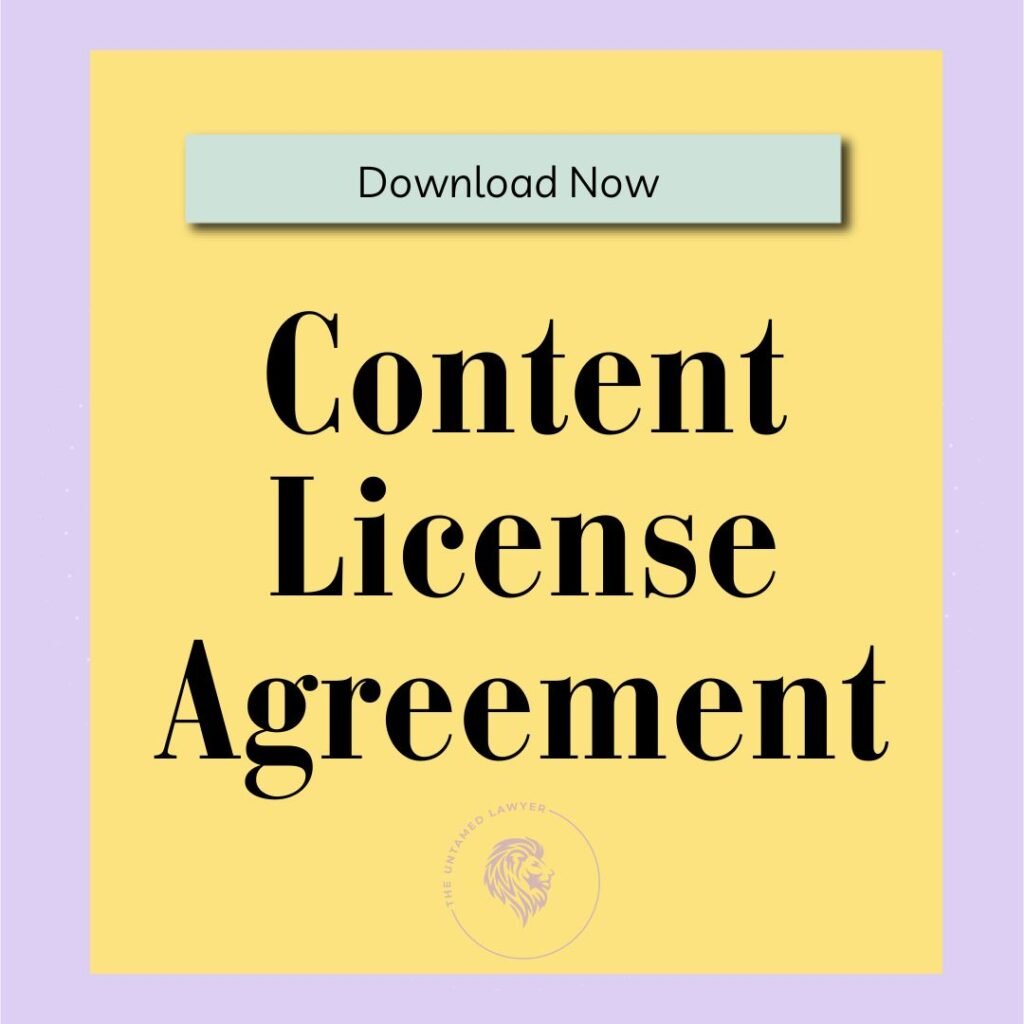
What Is a Content License Agreement
What Is a Content License Agreement: The Ultimate Guide (Including 11 Key Essentials)
In today’s digital world, using someone else’s content or allowing others to use your content is a common practice among creators and entrepreneurs. However, understanding the legal framework behind content usage is crucial to protecting your rights and interests. As a lawyer who drafts licensing contracts and offers a comprehensive Legally Legit Contract Bundle, I’m here to guide you through the essentials of a content license agreement.
Last year I had a few videos go viral on TikTok and many requests from platforms to use my content. BE CAREFUL with offers / requests like this. Should you have a video that others want to use, you do not want to give away your rights completely. You should avoid ambiguities by having a clear, enforceable licensing agreement that explicitly states what users can and cannot do with your content. This helps prevent misuse and makes enforcing your rights much simpler. You can also add this to your terms & conditions.
What Is a Content License Agreement?
A content license agreement is a legal contract in which the content owner (licensor) grants another party (licensee) the right to use their content under specific terms. This agreement does not transfer ownership of the content; it only allows the licensee to use it as specified. This distinction is crucial as it maintains the licensor’s ownership while enabling the licensee to benefit from the content’s use.
Licensor vs. Licensee
- Licensor: The person or entity granting the license to use the content. The licensor can be the original creator or an entity that owns the rights to the content.
- Licensee: The person or entity receiving the right to use the content under the terms of the agreement.
Types of Content Licenses
- Exclusive License: Grants the licensee sole rights to use the content. The licensor cannot use the content or grant licenses to others.
- Non-Exclusive License: Allows the licensee to use the content, while the licensor retains the right to use it and grant licenses to others.
- Sole License: A hybrid where both the licensor and the licensee can use the content, but no third parties can receive licenses.
11 Key Essentials for Your Content License Agreement
To ensure your content license agreement is robust and legally sound, it should include the following essentials:
- Type of License: Specify whether the license is exclusive, non-exclusive, or sole.
- Scope of the License: Clearly define what content is being licensed.
- Purpose: Outline what the licensed content can be used for (e.g., website, social media, marketing).
- Location: Indicate where the content can be used (e.g., specific websites, platforms).
- Term: Specify the duration of the license (e.g., indefinitely or for a limited time).
- Modification Rights: State whether the licensee can edit or repurpose the content.
- Sublicensing: Clarify if the licensee can grant sublicenses to third parties.
- Transferability: Define whether the license can be transferred to another party.
- Compensation: Detail any payment terms, such as fixed fees or royalties.
- Revocation Conditions: List circumstances under which the licensor can revoke the license (e.g., misuse, non-payment).
- Attribution: Specify if the licensee must credit the licensor when using the content.
Understanding the Legal Terms
License vs. Assignment
It’s important to distinguish between a license and an assignment. An assignment transfers all intellectual property rights to the assignee, making them the new owner. In contrast, a license allows the licensee to use the content under specific terms, while the licensor retains ownership.
Content Specificity
When drafting a content license agreement, be very specific about the content being licensed. This could include:
- Images: Specify which photos or illustrations are covered.
- Videos: Clarify if the license includes video and audio.
- Audio: Define if it’s the entire recording or just a part.
- Text: Outline which written content, like blog posts or articles, is included.
Why You Need a Content License Agreement
A well-drafted content license agreement protects both parties by clearly outlining the rights, responsibilities, and limitations associated with the use of the content. It helps avoid misunderstandings and legal disputes, ensuring that both the licensor and the licensee have a clear understanding of their agreement.
Get Your Content License Agreement Template
If you’re looking for a comprehensive content license agreement template that covers all these essentials, the Legally Legit Contract Bundle offers a ready-to-use solution. This bundle includes customizable templates for various licensing needs, ensuring that your content is protected under UK law.
Free Content License Agreement Template
For those who prefer a free option, I’m offering a free content license agreement template HERE. This template includes the fundamental elements needed to protect your content and comply with UK law. However, for a more comprehensive and detailed agreement, consider the paid template available in the Legally Legit Contract Bundle.
Conclusion
Understanding and implementing a content license agreement is essential for any creator or entrepreneur. It protects your intellectual property, outlines clear usage terms, and ensures that your content is used in a manner that aligns with your intentions. Whether you choose the free template or opt for the more detailed Legally Legit Contract Bundle, having a robust content license agreement in place is crucial for safeguarding your digital assets.

